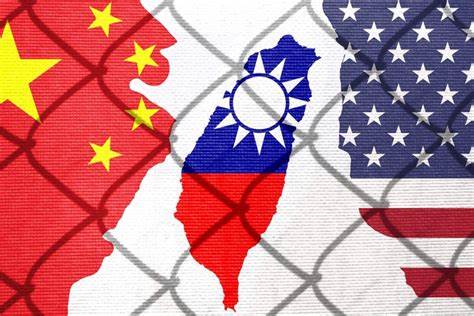In April, Taiwan’s export trajectory encountered a nuanced landscape, with the island nation experiencing a slight setback in its export performance primarily attributed to weakened demand from China, its largest trading partner. Despite the modest overall growth of 4.3% year-on-year to $37.5 billion, this figure fell short of market expectations, which had anticipated a more substantial uptick of 10.2%. This development marks the sixth consecutive month of export growth for Taiwan, highlighting the resilience of its export sector amid global economic uncertainties.
A noteworthy aspect of Taiwan’s export dynamics in April was the remarkable surge in shipments to the United States, reaching an all-time high driven by robust demand for artificial intelligence-related products. Taiwanese exports to the U.S. soared by an impressive 81.6%, totaling $10.2 billion. This surge represents a significant acceleration from the 65.7% increase observed in March, signaling the growing importance of the U.S. market for Taiwanese exports, particularly within the tech sector.
Conversely, exports to China, Taiwan’s largest trading partner, experienced a notable decline of 11.3% year-on-year, falling to $11.3 billion. This downturn follows a modest decrease of 1.3% in the previous month, underscoring the challenges posed by fluctuating demand in key markets and the impact of geopolitical tensions on trade relations between Taiwan and China.
Despite the overall slowdown in export growth, the Finance Ministry remains cautiously optimistic about Taiwan’s export prospects, projecting a 7% to 10% year-on-year increase for May. This optimism is underpinned by anticipated demand for new technologies reliant on artificial intelligence and high-performance computing, reflecting Taiwan’s ongoing efforts to diversify its export portfolio and capitalize on emerging trends in the global market.
The surge in U.S. shipments is particularly significant as it continues a trend that began earlier in the year when the U.S. surpassed China as Taiwan’s largest export market for the first time in over two decades. This shift underscores the strategic importance of the U.S. market for Taiwanese exports, especially within the tech sector, and highlights the potential for further growth and collaboration between the two countries in key industries.
Despite ongoing geopolitical tensions and concerns surrounding Taiwan’s security, the island nation remains confident in the continuity of U.S. support. Taiwan’s foreign ministry has emphasized the bipartisan backing for Taiwan, regardless of the outcome of future presidential elections, providing a sense of reassurance amid regional uncertainties and geopolitical complexities.
China’s stance on Taiwan continues to be a significant factor influencing economic dynamics in the region. Recent calls for more pragmatic military relations between China and the U.S., emphasizing the sensitivity of the Taiwan issue, highlight the delicate balance of power and the intricate geopolitical landscape in East Asia.
In conclusion, while Taiwan faces challenges in its export performance, particularly in relation to Chinese demand, the surge in U.S. shipments presents a promising opportunity for continued growth and resilience in Taiwan’s export sector. Navigating these challenges will require agility, strategic planning, and cooperation between government and industry stakeholders, but Taiwan remains well-positioned to capitalize on emerging opportunities and navigate the evolving dynamics of the global market.
